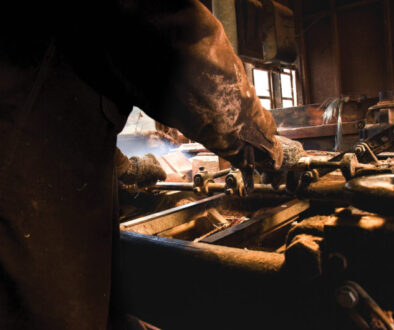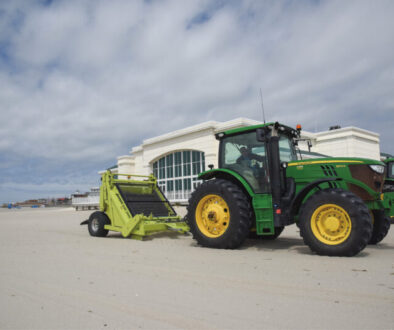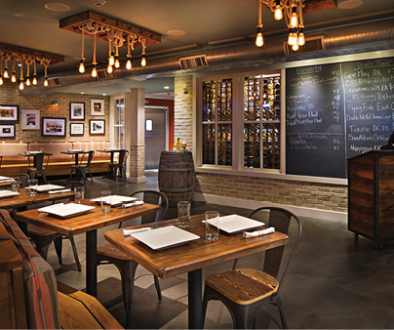Seaside Snapshots
People have always wanted to capture their beach memories— here’s a look back at a time when that was a bit more labor-intensive.
Taking pictures may be easier than ever today because of smartphones, but there is nothing new about wanting to record our experiences and preserve memories. Photos have been part of our lives for more than 150 years and, over the past century, emerging technology has turned even the most ordinary people into photographers.
The first photographs resulted from a somewhat time consuming, expensive, and complex process called daguerreotype, where photo negatives were reversed and imprinted on glass. While this process resulted in a high-quality portrait, it also required subjects to sit still for as long as 25 minutes and produced only one print. People were amazed by the lifelike portraits, and daguerreotype studios sprang up in big cities and even in some smaller towns during the mid-1800s.

A refinement of the process allowed multiple copies to be printed from the same negative, resulting in much less expensive photographs, referred to as salted paper prints. As photography continued to be improved, salted paper prints were replaced by albumen silver prints and tintypes, which were prevalent during the 1860s. Tintypes were not as clear as albumen prints but could easily be made by itinerant photographers who carried their equipment with them as they traveled from place to place. As a result, tintypes were often made at traveling carnivals, circuses, or resorts well past the 1900’s.
Eastman Kodak revolutionized photography in 1888 with the invention of the film camera, which resulted in very quick exposure times; people being photographed did not need to sit still for long periods of time as was required with other methods. In 1900, the company introduced the Brownie camera, followed by other innovations for photographers and consumers. In just about 50 years, technology had resulted in photography that everyone could use.
Studio photos remained popular throughout the 1900’s. In tourist locations such as Cape May, photographers adopted a new process called Ping Pong and advertised themselves as Ping Pong Studios. These photos were the predecessors of the photo booths that many of us knew as children (and which you’ll still occasionally find), where a strip of photos was produced while you waited. Ping Pong photos required a special camera where the photographer shifted a plate back and forth either horizontally or vertically, thus the ping pong name. Photos were either purchased as a strip, or more often were cut apart and made into cabinet cards or the very popular postcard photo. Real photo postcards were introduced by Kodak in 1903 and were taken by postcard cameras, which produced a negative the size of a postcard. Negatives were printed and then mounted directly onto postcard paper to be saved or mailed to folks back home. Throughout the early 1900s, these readily available and inexpensive photos were generally taken against studio backdrops and, in Cape May and other shore towns, subjects were posed in bathing costumes and against ocean backdrops for the perfect souvenir.


The earliest photographer in Cape May was Oliver H. Willard, a Philadelphia photographer well known for the quality of his daguerreotype portraits and salt paper prints. Exactly when Willard set up his summer studio in a tent on the Congress Hall Lawn is not known, but the studio seems to have operated for a decade from the mid-1860s until 1875 when Willard suddenly died.
William Long, another Philadelphia photographer, took over the summer Congress Hall Lawn location and moved his Philadelphia photography business to Willard’s Philadelphia Chestnut Street address; it is possible that he purchased this business following Willard’s death. Long’s photos were taken in many locations of many different subjects including events, houses, beaches, and in his studio.
In addition to making his photos up as cabinet cards or other single prints, as did other photographers, Long also made stereographs, which were two identical photos mounted together and viewed using a stereoscope that merged the two photos to produce a 3-D image. These plentiful images were inexpensive photos of cities, events, and people that allowed the general public to see and learn about places or things that would otherwise be inaccessible to them, or to purchase individual cards as souvenirs of their travels.



Gilbert and Bacon, known for stereographs and located at Beach and Perry Streets opposite Congress Hall, began about 1876. The studio was burned in the 1878 fire and re-established for a few years until the early 1880s. Because Cape May was a prime resort and tourist destination, many stereographs were made so that people could see the hotels, beaches, and other happenings at the resort even if they were unable to visit. If they did visit, individual stereo cards were perfect mementoes.
The Congress Hall Lawn studio was in business for about 20 years. Another beachfront studio, Brown’s Gallery, was established at the foot of Ocean Street around 1875.
This location was taken over by Levin Handy, who was a prominent photographer in Washington, D.C., having been trained by Matthew B. Brady, a famous Civil War photographer. Handy closed his Washington, D.C. business each year at the end of June and spent July and August in Cape May. In 1880, he formed a partnership with Samuel Chester from Haddonfield, and the two men worked together in both Washington, D.C. and Cape May until 1893 when the partnership was dissolved. Chester opened a studio in Camden, which he operated on Federal Street until the 1920s when he died. Chester became the sole photographer at the Stockton Bath location. He also was associated with the Pier Avenue Photo Gallery in 1895 when shops were opened at the entrance to the Iron Pier. Tintypes were made at the Pier Gallery, but from 1908, when new stores were built at the end of the Pier, the gallery became the Ping Pong Studio, taking postcards and cabinet cards into the 1920s. Handy and Chester’s original Stockton Bath location was taken over by Smith and operated as Smith’s Studio until the early 1900s when it, too, became a Ping Pong studio.

Cape May Ping Pong studios became obsolete as consumers were able to make photos on their own or by sitting in a photo booth. By the 1930s, coin-operated photo booths were located in resort communities across the country, allowing consumers to obtain head shots about five minutes after the photos were taken. Today, families visiting shore communities like Cape May can have professional portraits taken on the beach or in their homes, but most of their summer memories are on their own phones.



